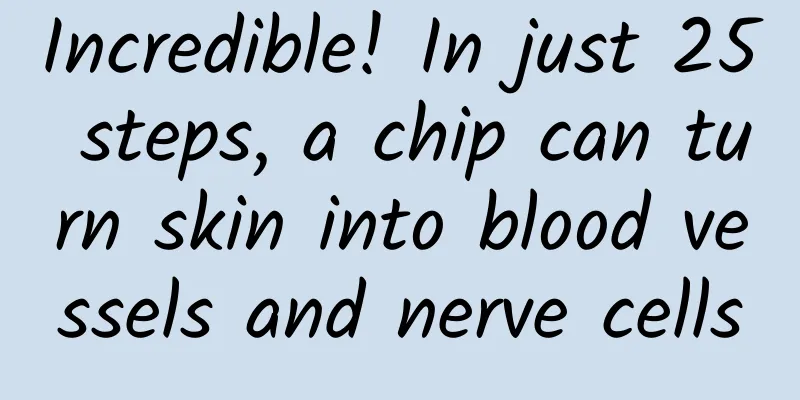Incredible! In just 25 steps, a chip can turn skin into blood vessels and nerve cells

|
Using a chip to instantly turn your skin tissue into blood vessels or nerve cells sounds too sci-fi. However, researchers from Indiana University and Ohio University have not only made it a reality, but also made the chip manufacturing technology open source. In other words, if you have the necessary medical knowledge, you can follow the instructions to make a VIP tissue conversion chip of your choice within five to six days! In this paper published in Nature Protocols, titled Fabrication and use of silicon hollow-needle arrays to achieve tissue nanotransfection in mouse tissue in vivo, scientists from Indiana University detailed this non-invasive and harmless black technology. Using electroporation technology, you can directly introduce plasmid DNA into a specific depth of mouse (or your own) skin within milliseconds to transfect the skin into blood vessels or nerve cells. Schematic diagram of nanotransfection | Source: Indiana University The authors say that the equipment required for this "tissue nanotransfection technology" (TNT) can be standardized and mass-produced. The biggest advantage of "tissue nanotransfection technology" is that it does not require the use of viruses as carriers, thereby minimizing the risk of inflammatory response and cell death. “This paper will get more people involved in regenerative medicine,” said Chanda Sen, director of the Indiana Center for Regenerative Medicine and Engineering, who invented the technology. Preparation of hollow microneedle arrays According to the "Nanotransfection" manual, changing tissue function is divided into three steps (a total of 25 specific operation links): preparing a hollow microneedle array, preparing a TNT device, and transfecting cells. The first thing to consider is which microneedle array to use. There is always a microneedle with different forms that is suitable for you. For the introduction of plasmid DNA into the local skin, the author recommends using a microneedle with a flat tip (see Figure 1A). For the introduction of deep tissue, the author recommends using a microneedle with a sharp tip to facilitate tissue penetration (see Figure 1B or 1C). Various microneedles | Source: Paper After choosing the style, we will start hand-making. First, a layer of photoresist is applied to a double-sided polished 4-inch silicon (Si100) wafer, and then the wafer is deep reactive ion etched (DRIE) using the Bosch process. Three different types of silicon hollow microneedles can be prepared according to transfection needs, including type I with a flat tip (Figure 1E, Type I), type II with a protruding tip, or type III with an eccentric hole (Figure 1F, g). The latter two types of microneedle arrays with sharp tips are more conducive to penetrating into tissues. If the diameter of the nanochannel of the needle is reduced, the speed at which the needle can output biomolecules will increase accordingly; however, this may also limit the total amount of molecules that can pass through the needle. When the nanochannel diameter is too small (250 V), the driving force will increase and a larger pore will be created in the cell membrane, which will help the delivery of plasmids. However, if the voltage is too high, it will be toxic to the cells. The authors said that the ultimate goal of this TNT chip with a silicon hollow microneedle array is to reprogram tissues. With the help of this chip, experimental mice avoided tissue necrosis in their hind limbs, and even the nerve cells transplanted into the brain improved the neurological function of stroke mice. Currently, scientists have not conducted large-scale clinical trials on humans. But after the method of making nanochips is open source, it will surely attract the interest of a large number of biohackers. Let us wait and see what kind of magical discoveries will be made at that time. References: https://www.nature.com/articles/s41596-021-00631-0 Written by: Liu Fang Editor: HS Layout: Li Xuewei Source: Academic Headlines |
>>: Made in China Day | The craftsmanship and art of a rocket
Recommend
Amazon Amazon Global Store FBA Logistics Practical Course Value 518 Yuan (Completed)
Amazon Amazon Global Store FBA Logistics Practica...
7 key words! Interpreting the hot new trends in digital marketing in 2019
With the changes in the digital environment, mult...
"Happy Candy Crush" APP Operation Analysis
Happy Match 3 is a strategy game developed by Ten...
UPYUN Open Talk: Subverting daily life/APP architecture and technology extension
About this activity Mobile Internet has swept eve...
What are the skills and methods for selling goods through Kuaishou live streaming? How many people does the Kuaishou live streaming sales team need?
This article mainly introduces the skills and met...
The fifth professional shooting and editing practical training camp of Red Planet Nan Ge, 7 days of professional shooting and editing practical courses
The course comes from the Red Planet of Departure...
How to establish long-term relationship chains with users?
This article will explore the tricks to attract u...
How a designer wrote and released an app in 4 months
[[132950]] The story behind GAget, the Google Ana...
CP, I will just watch your money go down the drain
My name is Pai Gu. Many people have heard of me. ...
A quick overview of scientific and technological achievements on the horizontal screen | Mengtian Laboratory Module and China Space Station
China's space station construction It is the ...
UK new car production and growth rate from October 2019 to June 2020 (with original data table)
...
Enjoy mobile life Lenovo Tablet S8 outdoor experience review
The just concluded 11.11 Shopping Festival showed...
5,000 words of practical operation tips to help you become an operation expert
Before reading this article, please think about: ...
Never wipe the blackboard for scientists without permission...
If all the blackboards in the world disappeared o...
Subvert your cognition: the probability of flipping a coin is not 50%
Audit expert: Liu Yuhang PhD, Beijing Internation...









